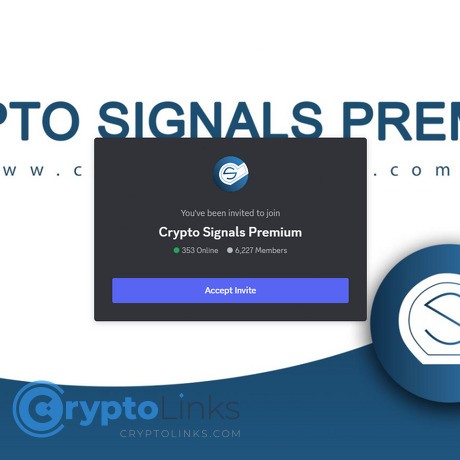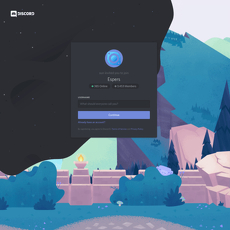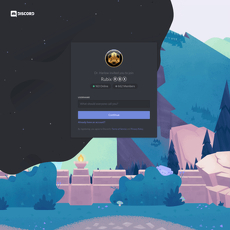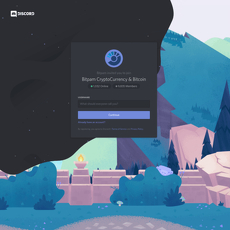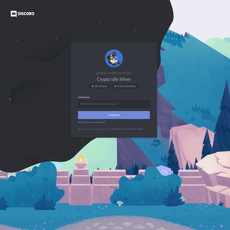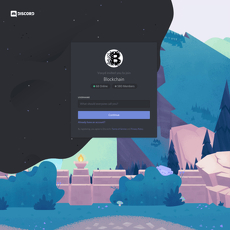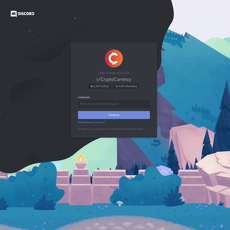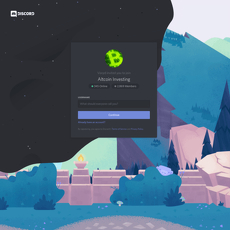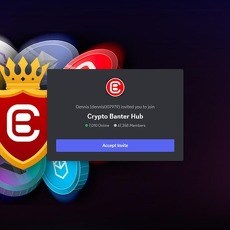Crypto Signals Premium Review
Crypto Signals Premium
discordapp.com
Crypto Signals Premium (Discord) Review: No-Hype Guide, Safer Plan, and Real Answers + FAQ
Have you ever wondered if a premium crypto signals Discord can actually help you trade better without living on charts 24/7? Or if it’s just another Telegram-style hype machine that looks good on screenshots but quietly burns your account?
That’s exactly what I’m tackling here with the Crypto Signals Premium server: what it is, how it really works, who it’s for, and—most importantly—how to use it safely so you don’t overtrade, overleverage, or chase entries you can’t actually manage.
The pain: signal hype, empty win-rate claims, and confusion
If you’ve tested a few signal groups, you’ve probably seen the pattern:
- “90% win rate!” in bold banners, yet no time-stamped history to back it up.
- Cherry-picked screenshots of the best trades while losers disappear into thin air.
- Missing details: no clear stop-loss, no invalidation rule, vague “zone” entries.
- Leverage roulette: “20x+ recommended” with no risk plan, then silence when volatility spikes.
- Chaos in execution: multiple edits, late updates, or signals you can’t catch because they hit in minutes.
That confusion has a cost. Regulated CFD data shows most retail traders lose money—often 70–80%+ of accounts depending on the jurisdiction. Leverage multiplies both sides of your PnL, and your process becomes more important than any single call. Classic behavioral research has shown similar issues for years—overtrading and chasing hurt outcomes (for example, Barber & Odean’s work on individual investors and performance).
Here’s a quick real-world example of how things go wrong with poorly structured signals:
“LONG BTC 20x NOW. Targets: 1, 2, 3. Move SL to entry when green.”
What’s the entry? What’s “green”? What if price spikes, misses your fill, then reverses? Where exactly do you cut the trade if it goes against you? Without specifics, you’re gambling, not trading.
Now contrast that with something actually usable:
“BTCUSDT LONG — Entry: 63,200–63,450. SL: 62,580 (hard stop). TPs: 63,900 / 64,350 / 64,900. Max risk: 0.75% of account. If 62,900 breaks on 15m close, setup is invalid. Spot or <=3x only for beginners.”
See the difference? Clear entry zone, hard stop, multiple take-profits, invalidation, and risk guidance. That’s what you want from any paid group before you even think about subscribing.
The promise: a practical, no-hype review with a safe plan
I’m going to walk you through how Crypto Signals Premium actually operates, what you get inside, how the signals are structured, and a safe way to plug them into your routine without blowing up your account. No magic. No moon math. Just a straight, usable framework you can keep using even if you leave the group later.
On top of that, you’ll get a simple method to track performance yourself. If a server is good, it should welcome accountability. If it’s not, you’ll spot the red flags fast.
What you’ll learn and who this helps
This guide is built for beginners and intermediates who want structured trade ideas without the guesswork. Here’s what you’ll get from the full review:
- What the server actually provides — channels, signals, education, and how support works day to day.
- How the signals are structured — entries, stops, TPs, leverage notes, timeframe, and risk/reward.
- How to size trades and manage risk — a simple, repeatable plan using fixed risk per trade and position sizing.
- How to automate alerts smartly — mirroring levels in TradingView, using pings, and not overcomplicating your setup.
- How it stacks up against popular servers — what good looks like, and what to avoid.
- Clear answers to the common questions — exchanges, leverage, win rates, and how to verify results yourself.
Think of signals as tools. Used with a process, they can help you spot opportunities, learn setups faster, and reduce screen time. Used without risk rules, they become entertainment with expensive consequences.
Ready to see what this Discord actually is, who runs it, and what’s inside the channels before you consider paying? Let’s open the door and take a look next.
What is Crypto Signals Premium on Discord?
If you’ve been hunting for a crypto signals Discord that gives clear entries, stops, and take-profit levels without the chest-beating win-rate spam, Crypto Signals Premium is pitched as that kind of server. It’s built for traders who want structured trade ideas they can execute in minutes—not sit on charts all day. Think beginners to intermediates who need a plan, guardrails, and fast updates when markets move.
The promise is simple: time-stamped trade setups you can copy, with enough context to manage risk. You’ll typically see a mix of spot and futures ideas, scalps when the market is active, and swing trades when higher timeframes line up. The tone is “trade the plan, manage risk, repeat,” rather than “ape this 50x long.”
“The market doesn’t pay for effort—it pays for execution.”
That’s the emotional hook for most members: get fewer but clearer signals, protect your capital, and build confidence through consistency. There’s a reason studies like Barber and Odean’s “Trading Is Hazardous to Your Wealth” (2000) found that overtrading crushes returns—clarity and restraint tend to win. And regulators like ESMA have flagged how leverage accelerates losses for retail traders; structure and risk rules aren’t optional, they’re survival.
Who runs it and what’s inside the server
The server uses a standard pro layout so you aren’t guessing where to go. Roles are split between admins, moderators, signal analysts, and bot integrations, with separate ping roles so you only get alerts for the styles you care about (for example, scalps vs. swings). You’ll see brief analyst intros and pinned house rules so you understand how calls are built and how updates are handled.
Common sections (names can change, but the structure stays familiar):
- Announcements – Platform updates, maintenance, policy changes, market warnings.
- Getting Started – Server rules, risk framework, how to set notifications, and “read this first.”
- Free Signals / Public Feed – Occasional samples so you can test the style and clarity.
- VIP Signals – The main feed for scalps and swing setups with entries, stops, and TPs.
- Scalp Room – Faster ideas for lower timeframes; usually tagged with higher urgency.
- Swing Room – Fewer trades, wider stops, clearer invalidation for people with jobs.
- Education – Guides, playbooks, risk calculators, and chart examples of past setups.
- Results / Archive – Closed trades with time-stamps and notes on partials or stop moves.
- Support / Q&A – Ask questions, share charts, and get help with execution or tools.
Transparency is handled through time-stamped posts and update threads. Instead of rewriting history, updates are added as comments or new posts so you can follow the lifecycle of a trade. For new members, that alone reduces confusion: you can scroll the exact sequence—entry called, TP hit, stop moved, final close.
Signal format and delivery
Signals are structured so you can place the order in under a minute. A typical post will include:
- Pair and direction – For example, BTCUSDT LONG or ETH/USDT SHORT.
- Entry zone – A range rather than a single number to reduce slippage (e.g., 62,350–62,800).
- Stop-loss – A hard stop with invalidation logic (e.g., “1h close below X = invalid”).
- Take-profits – Usually TP1, TP2, TP3 for scaling out and stress reduction.
- Leverage note – Often “spot or low leverage only,” so you aren’t tempted to overgear.
- Timeframe context – 15m/1h for scalps, 4h/D for swings, so expectations match reality.
- Risk/Reward note – An approximate R:R or an instruction like “reduce risk if late.”
Here’s an example format you’re likely to see (purely illustrative):
- Pair: BTCUSDT
- Direction: LONG
- Entry: 62,350–62,800
- Stop-loss: 61,480 (invalidation: 1h close below 61,600)
- TP1: 63,200 | TP2: 63,950 | TP3: 65,200
- Leverage: optional 3–5x; spot is fine
- Timeframe: 1h/4h
- Risk note: 0.5–1% account risk; break-even after TP1
Delivery is fast and layered:
- Discord pings using role tags so only relevant members get the alert.
- Bot stamps to mark edits or closures, reducing any “silent” changes.
- Follow-up posts for partials, break-even moves, or invalidation triggers.
That last part matters. Slippage and latency are real—your fill won’t always match the post. Quick updates and time-stamped edits make it easier to manage expectations and log your own results. It also protects you from the “edited history” problem that ruins trust in many groups.
Education and support
Signals are only half the story. The server expects you to manage risk with intent, so there’s a practical education layer designed to make you “signal-independent” over time.
- Starter guides – How to set risk per trade, place bracket orders, and avoid FOMO.
- Recorded lessons and playbooks – Common setups explained with real charts.
- Live charting or AMAs – Sessions that unpack why a trade was taken, not just what.
- Q&A channels – Ask execution questions without feeling silly; mods keep it clean.
- Tools hub – Position-size calculators, TradingView alert templates, and checklist PDFs.
Why this matters: education plus signals tends to beat signals alone. Retail outcomes improve when risk is sized consistently and trades are pre-planned—exactly the behaviors reinforced here. ESMA’s warnings about leverage and retail losses exist for a reason; pairing structured signals with a simple risk plan is how you sidestep the usual retail pitfalls.
Plan the trade, trade the plan. If a server actually helps you do that, it’s already ahead of 90% of the noise out there.
Curious what you actually get on the free tier versus VIP—and how trials, billing, and cancelation work so you can test without getting trapped? Let’s answer that next…
Pricing, free vs VIP, and how access works
“Price is what you pay; value is what you get.” That line sticks with me whenever I size up any crypto signals service. With the Crypto Signals Premium Discord, the setup is straightforward: there’s a public tier to get a taste, and a paid tier that unlocks the full toolkit. The trick is knowing exactly what you’ll use—so you don’t pay for noise.
Here’s how the tiers usually break down in real life, based on what I see inside and what comparable Discord servers offer:
- Free access
- Occasional sample signals (lower frequency, often delayed)
- Announcements and market notes so you can gauge their style
- Basic education and pinned rules to understand how signals are meant to be executed
- Public chat and mod presence so you can test responsiveness
- VIP access
- Full signals stream: entries, stop-loss, multiple take-profits, and update posts when the plan changes
- Higher volume of ideas when the market is actually setting up (not forced daily trades)
- Scalp and swing channels separated, plus priority support and faster alerts
- Post-trade notes and summaries so you learn the setups, not just copy them
Pricing for similar Discord signal servers typically sits in the $39–$99/month range for VIP, with discounts for quarterly or annual plans. Exact pricing can change—always check their Announcements channel or the billing page linked from the server header before you commit.
“Don’t pay for more signals. Pay for better decisions.”
Payment, renewal, and cancelation
Most Discord-based services use a membership gateway that auto-syncs your role once payment clears. You’ll usually see one of these platforms in the server’s “start-here” or “get-access” channel:
- Whop: After purchase, your Discord role is granted automatically. Cancel in your Whop dashboard → Subscriptions → Cancel. Access remains until the end of the billing cycle.
- Stripe (direct): You’ll get an email receipt with a “Manage subscription” link. Use that link to cancel. If the link’s missing, ask a mod for the customer portal link.
- Patreon: Cancel via Patreon Settings → Memberships. Your Discord role will revert automatically at period end.
Practical rules I follow so I don’t get charged while testing:
- Start with monthly, not quarterly. Quarterly discounts feel good, but “sunk cost” can trap you if the fit isn’t right. Behavioral research (Arkes & Blumer, 1985) shows we irrationally stick with prepaid choices—don’t let that bias tie you down.
- Set a calendar reminder for renewal +48 hours. Give yourself time to cancel if you’re not convinced.
- If they offer a trial or refund window, get it in writing (screenshot the policy in Announcements or the checkout page).
- Pay with a method that lets you self-manage the subscription (Whop/Stripe/Patreon). Avoid “manual” crypto payments for trials—you lose easy cancelation.
What to check before you pay
Five minutes of prep can save you a month of frustration. Here’s a simple pre-check checklist you can run from the free channels:
- Track record channel: Is there a public results or closed-trades log? Are posts time-stamped and consistent?
- Pinned rules: Can you clearly see how to size risk, what leverage (if any) they assume, and when a trade is invalidated?
- Recent activity: Are signals recent and matched to market conditions, or are they on autopilot?
- Mod responsiveness: Ask a basic question in the public chat. Do you get a helpful answer within a reasonable time?
- Sample signal quality: Look for full structure: entry zone, stop-loss, multiple TPs, and update posts when the plan changes. If samples are vague, VIP likely won’t magically clarify things.
Want an easy stress test? Take the last three public calls and map them on TradingView. Could you have executed them without guessing? If not, that’s a signal about their signals.
Red flags and green flags
Some things I always watch for when money is on the line:
- Red flags
- No time-stamps or posts edited after the move without an audit note
- Signals with no stop-loss or “mental stop” only
- Unrealistic leverage suggestions (e.g., 50–100x as a default) with no risk framework
- Only screenshots of wins; losses “forgotten” or quietly deleted
- Paywall redirects to manual crypto wallet with no subscription portal
- Green flags
- Clear stops, predefined invalidation, and TP levels before entry
- Update posts when the plan changes (e.g., “trade invalidated below X”)
- Time-stamped, unedited signal history with monthly summaries
- Mods that answer risk and execution questions without hype
- Transparent billing with a self-serve cancel button
One last nudge for peace of mind: use a small, separate exchange sub-account for testing VIP signals. Loss aversion (Kahneman & Tversky) can make you hold losers and chase winners when too much capital is on the line. Keep the test small so your decisions stay calm.
If the pricing feels fair and the access is clean, the next big question is obvious: how do you verify the signal quality without relying on cherry-picked screenshots? In the next section, I’ll show you a quick, repeatable way to audit results in 10 minutes a day—want to see how that works?
Signal quality and transparency: how to verify performance
“Signals” are easy to post and hard to prove. If you’ve been burned by win-rate screenshots and edited messages, you’re not alone. I want you to be able to look at a call in the moment and know if it’s structured, accountable, and tradeable—and then track the truth over time.
“Amateurs chase win rate. Pros protect R.”
R is your risk unit. If a trade risks 1% of your account and aims for 2%, that’s a 2R setup. Focusing on R turns hype into math you can actually manage.
What a “good” signal looks like
A quality crypto signal should read like a plan, not a wish. I look for:
- Exact instrument: e.g., BTCUSDT Perp on a specific exchange (or spot). Tickers vary by venue and prices can differ.
- Direction and timeframe: Long/short, with context like “setup based on 1h/4h trend” or “scalp on 5–15m.”
- Entry method: Single price or tight zone (not a 3% blob). Example: 27,480–27,560.
- Hard stop-loss: One clear line in the sand (no “mental stop”). Example: 27,280.
- Take-profits: Staggered targets with a management note, e.g., “TP1/TP2/TP3, move stop to breakeven after TP1.”
- Risk/Reward: The expected R multiple, or at least a stop distance and the targets so you can calculate it.
- Invalidation note: “Setup invalid if 1h closes below X” or “IFD: cancel if price nukes through zone before entry.”
- Leverage guidance: Optional, but if included it should be risk-based: “Risk 1R; leverage is your choice. Keep liquidation far beyond SL.”
- Update discipline: Edits must be time-stamped with a reason. New conditions get a new post, not a quiet tweak.
Here’s a simple, real-world style example (purely illustrative):
- Pair: BTCUSDT Perp (Binance)
- Direction: Long
- Timeframe: 1h trend, 15m trigger
- Entry: 27,480–27,560
- Stop: 27,280 (0.8% below lower entry)
- TPs: 27,900 / 28,200 / 28,600
- Notes: Move stop to breakeven at TP1; if 1h closes below 27,350, idea invalid
This is ~2.5R to TP3 (2.0% reward / 0.8% risk ≈ 2.5). The key isn’t flashy targets; it’s consistent structure. One clean loss at -1R hurts less than one messy call that morphs three times and nukes -3R.
Important reality check: if you chase entry by just +0.2%, your stop distance jumps from 0.8% to ~1.0% and the reward shrinks from ~2.0% to ~1.8%. Your RR collapses from 2.5R to ~1.8R. That tiny chase can erase half the edge. Good servers warn about this; great ones post “don’t chase” in bold.
Track record and audit tips
Trust is earned in the time-stamps. Before you risk real money, shadow-track for a few weeks. Here’s a simple, independent process I use:
- Collect message links: On each signal, copy the Discord message link. That’s your immutable anchor to the original call.
- Log the essentials: Make a sheet with columns:
- Date/time (UTC)
- Pair and exchange
- Direction (long/short/spot)
- Entry posted / entry filled (yes/no, and the exact fill)
- Stop-loss
- TP1/TP2/TP3
- Highest TP hit
- R multiple achieved (e.g., -1R, +0.5R, +1R, +2.5R)
- Was the message edited? If yes, when and why?
- Notes (slippage, funding, overnight gap, news)
- Set rules upfront: Decide how you’ll count partial fills (e.g., wick into zone = valid; front-run by 0.1% = not valid). Decide if moving to breakeven at TP1 locks the result.
- Use R, not PnL: One trader on 3x leverage and another on 1x should see the same R results. That’s how you compare apples to apples.
- Match summaries: Compare your sheet to the server’s weekly/monthly summaries. If they count a trade you didn’t see filled—or skip a clear stop-out—ask for clarification in public channels.
- Watch the edit trail: Discord tags edited messages. Quality teams add a new post for material changes and note the original plan. Quiet edits to entry/stop after the fact are a hard red flag.
- Demand sample size: A 10-trade “90% win rate” is coin flip theater. I look for 30–50 trades minimum before drawing conclusions, and I care more about expectancy:
- Expectancy ≈ (Win% × Avg R win) − (Loss% × Avg R loss)
- A steady 45% win rate with +1.8R winners and -1R losers beats a 70% win rate with +0.7R winners and -1R losers.
One more sanity test: if a server claims a monster month, ask for the unfiltered list of closed trades with time-stamps. If they can’t produce that in seconds, you already have your answer.
Leverage, slippage, and real execution
Leverage, fees, and fills are where great-looking signals go to die. Here’s how I pressure-test results in the real world:
- Leverage ≠ more profit: It only changes margin used. If you fix risk at 1R per trade, 1x vs 10x shouldn’t change R—unless your liquidation is dangerously close to your stop. Keep liquidation far beyond the stop and know your maintenance margin.
- Slippage is a tax: On volatile pairs, a market order can add 0.05–0.30% to your entry/exit. In the earlier BTC example, chasing by +0.2% cut RR from 2.5R to ~1.8R. Two or three chases like that can turn a winning month into flat.
- Fees matter: Many major futures venues charge around 0.02–0.05% maker/taker per side. Round-trip 0.06–0.10% is common. On a 0.8% risk, a 0.10% round-trip is 0.125R. If your average win is only +0.7R (because you scalp out early), fees quietly eat the edge.
- Exchange differences: A signal built on Binance liquidity might not behave the same on a thin offshore exchange. Spreads, funding, and mark prices vary. If the server doesn’t name a baseline exchange, assume the most liquid one for that pair and adjust expectations.
- Low-liquidity alts: Anything under a few million in daily volume can slip 0.3–1.0% just entering. A good signal provider will warn you or size down. When in doubt, skip the illiquid lottery tickets.
- Order type discipline:
- Limit orders: reduce fees and slippage but risk missing the fill.
- Market orders: get the fill but widen your effective risk. If you must, cap with a limit marketable order slightly inside the spread.
- Funding and overnight risk: Perps charge funding every 8 hours on most exchanges. If a swing trade is open for days, those payments change your net R. Track it.
Quick math that saves accounts: suppose a setup risks 0.8% and targets 2.0% (2.5R). If you enter 0.2% worse and pay 0.10% round-trip fees, your effective reward may drop to ~1.7–1.8% while risk rises to ~1.0%. Your 2.5R idea just became ~1.6–1.8R. That’s why I care more about execution notes in a signal than the “win-rate” headline.
Finally, remember the emotional trap. A string of winners makes people widen stops “just this once,” and a fast loser makes them chase the next entry. Good signals help, but your results come from the rules you follow between the lines of every post.
Want a simple, step-by-step way to apply all this—how much to risk, how to size each trade to the exact stop, and how to pick which signals to take without FOMO? That’s exactly what I’m breaking down next.
How to use Crypto Signals Premium safely (step-by-step)
Signals are tools, not shortcuts. If you can follow a simple plan, you can use the Crypto Signals Premium Discord without blowing up on a bad day. Here’s the workflow I use to stay safe, consistent, and calm—especially when markets get loud.
“Amateurs think about how much they can make. Professionals think about how much they can lose.” — Paul Tudor Jones
Risk per trade and position sizing
Your edge lives or dies on risk control. Keep it boring and fixed. I risk a tiny, consistent slice of my account on every trade so no single call can wreck my week.
- Pick a fixed % risk: 0.5–1% per trade is a great default. If you’re new or using leverage, stay closer to 0.5%.
- Use this formula: Position size = Risk Amount / Stop Distance.
- Never widen your stop “to save it.” That’s how small losses become big ones.
Example (spot or perps, no heroics):
- Account: $10,000
- Risk per trade: 0.75% = $75
- Signal: BTC/USDT long, entry 61,200–61,800; stop 60,450; TP1 62,400; TP2 63,100; TP3 64,250
- Suppose you get filled at 61,600. Stop distance = 61,600 − 60,450 = $1,150 (1.87%)
- Position size = $75 ÷ 0.0187 ≈ $4,011 nominal
- If using 3x isolated leverage: margin ≈ $1,337; risk stays ≈ $75 (because the stop cuts you out)
Partial exits to cut stress: I often take 30–40% off at TP1 and move stop to break-even only if price structure confirms (for example, a higher low after TP1). This way, one winner can erase a couple of small losses.
Reality check: Studies show overtrading and oversized bets kill performance. Barber & Odean (2000) found frequent traders underperform by ~6.5% annually. Keep risk tiny and frequency controlled.
Alerts, tools, and automation
The goal is to execute cleanly without sitting on charts all day. Set your alerts once per session and let them come to you.
- Discord setup: Turn on notifications for the VIP signals channel only. Mute the noise. Use “Only @mentions” if pings get overwhelming.
- TradingView alerts: Create alerts at:
- Entry zone midpoint
- Stop level (as an “invalidation” alert)
- TP1 (to manage partial exits)
- Use OCO (One-Cancels-the-Other) orders: Entry + stop + TP in one bracket. If your exchange supports stop-market, prefer it for certainty.
- Keep leverage modest: Isolated only. 1–3x is plenty. Cross margin is where good accounts go to die.
- Automation (only after you’re consistent): Tools like Alertatron, 3Commas, or Cornix can mirror alerts to orders. If you try this:
- Paper-trade for at least two weeks
- API keys with trading only (no withdrawals)
- IP whitelist if available
- Hard daily loss stop in the bot settings
My 5-step execution checklist (copy it):
- Price is inside the entry zone and market conditions match the plan
- Position size calculated; OCO order ready
- Stop is placed from the start (no manual “mental stops”)
- TP1 alert/limit set; Discord updates on
- Walk away—no tinkering unless a clear update from the signal or structure change
Trade selection and timing
You don’t need every call. Selectivity is your superpower. A smaller number of A+ trades sized correctly beats chasing everything.
- Align with your schedule: If you can’t watch lower timeframes, skip scalps. FOMO costs more than patience.
- Market filter: If BTC is chopping in a 1% box, pass on high-beta alt scalps. In trends, favor continuation setups.
- Correlation cap: Only one or two positions with high correlation. If you long BTC, do you really need to long ETH and SOL too?
- News filter: 60 minutes before/after CPI, FOMC, or major listing news—either reduce size or skip. Volatility spikes widen slippage.
- Missed-entry rule: If price runs past the zone without you, let it go. No chasing. Set an alert for a retest.
- Cooldown rule: After a loss, 20-minute break. Revenge trading is how small red days become big ones. Loss aversion is real (Kahneman & Tversky showed we feel losses ~2x stronger than similar gains).
- Max exposure rules:
- Max 2% total risk across all open positions
- Max two new trades after the first loss of the day
- Stop trading for the day after two consecutive losses
- Simple journaling (1-minute minimum): Write: setup, reason, entry/exit, what I did well, what to fix. This is where you learn faster than 99% of the room.
What a “clean” selection looks like with a real-style signal:
- Signal: ETH/USDT short, entry 2,475–2,520; stop 2,565; TP1 2,430; TP2 2,370; timeframe: 1h trend
- It fits your window (NY session), ETH is weaker vs BTC, and funding is slightly positive (sellers get paid if it trends down)
- You place an OCO at 2,500, stop 2,565, TP1 2,430 for 40% size, rest trails only after TP1
- Price tags 2,430, you bank partial, move stop to entry on remainder after a lower high confirms
Why this works: You’re stacking small edges—defined risk, planned exits, and no chasing. Over time, consistency beats occasional home runs.
Quick note on expectations: Even good signals lose. What matters is that your average win is bigger than your average loss, and you survive long enough to let that edge show up.
Now, if you’re wondering how Crypto Signals Premium stacks up against other Discord groups—who’s transparent, who actually educates, and what a “legit” signal service looks like—shall we take a look at that next?
Comparisons, alternatives, and what “legit” really means
Everyone wants the same thing from a signals group: clear setups, clean execution, and honest reporting. The hard truth is that most rooms don’t deliver all three. So here’s the real benchmark I use when I compare Crypto Signals Premium with other Discord servers—and what you should expect if you’ve bounced between groups before.
Are there any legit crypto trading signals?
Yes—there are groups that treat signals like a repeatable process rather than hype. They post structured, time-stamped calls with stops, they update trades when the market moves, and they educate members so you’re not guessing. That’s the baseline for “legit.”
Here’s what that looks like in practice:
- Every call has a hard stop-loss, not “mental stops.” No stop = no trade.
- Time-stamped entries and edits. If a message is edited, it shows what changed and why.
- Defined invalidation (“Trade thesis is wrong above X”) and a timeframe context.
- Risk-first language: “Risk 0.5–1% per trade,” not “20x or nothing.”
- Post-trade summaries: win, loss, breakeven, partial TP—no cherry-picking.
- Monthly rollups with R-multiple totals, not just flashy PnL screenshots.
Example of a clean, usable signal you should expect:
ETH/USDT Long — Entry: 2,410–2,420 | SL: 2,378 | TP1: 2,455, TP2: 2,490, TP3: 2,540 | Invalidation below 2,370 | 15m–1h bias | Risk 0.75% of account.
Update: TP1 hit, stop to breakeven. If price closes below 2,418 on 15m, reduce by 50%.
Where does Crypto Signals Premium sit in this landscape? If they keep signals structured like the example above, post fast updates, and publish monthly summaries in R, they’re playing in the “serious” tier. If you ever see missing stops, edited winners without audit notes, or constant calls in dead markets just to look busy—that’s not it.
Fast way to test any group (and protect your cash):
- Paper-track 20 signals before risking money. Record entry, SL, TPs, time, and whether you could realistically fill it.
- Check the “messy moments.” Do they update when price tags the stop? Do they admit invalidation? Or does silence follow losers?
- Compare your sheet to their monthly report. The gap should be small and explainable (fees, slippage, timing).
If a group is truly legit, your paper audit should land within shouting distance of their claimed results—and you’ll feel calmer, not more anxious, following along.
Is “Elite Crypto Signals” Discord legit?
I’ve seen reviewers say Elite Crypto Signals offers detailed entries/exits and VIP perks. That’s promising—but “looks good” is not “is good.” Treat it like any paid tool and run a quick audit before you commit.
Here’s the same checklist I’d use for them (or anyone):
- Stops on every call. If even one trade lacks a defined stop, pass.
- Edit transparency. Are updates time-stamped and reasoned, or do winners quietly appear hours later?
- Invalidation logic. Do they say “thesis is wrong above/below X,” or is it vibes-based?
- Fill realism. Are entries posted at mid-range levels you can actually get, or perfect bottom/top ticks?
- Monthly summaries with losers shown. If every recap is 90% wins, assume cherry-picking until proven otherwise.
- Reasonable leverage. “Use your own leverage, spot OK” is adult language. “50x, let’s go” is not.
- Sample 30 calls over 4 weeks. Log fills, slippage, and whether updates kept you safe or stranded.
If Elite (or any server) clears those bars, they’re worth a closer look. If not, the marketing is better than the trading.
Can you make money with crypto signals?
You can—but the edge usually comes from how you use signals, not the signals alone. Think math, not magic.
Quick reality check backed by broader trading research:
- Risk compounds both ways. Regulators report that a high percentage of retail CFD clients lose money, largely due to leverage and poor risk control. Crypto futures behave similarly if you oversize.
- Overtrading kills. Academic work on active retail traders shows most underperform from frequent, impulsive entries. Signals don’t fix this if you chase everything.
- Hype rooms hurt late followers. Research on pump groups shows late entries tend to lose; structured, pre-planned levels beat reactionary calls.
So what actually drives profits with signals?
- Expectancy rules. A simple formula: E = (Win% × Avg Win) − (Loss% × Avg Loss). If you win 40% of the time but average +1.8R and lose −1R, your expectancy is 0.4 × 1.8 − 0.6 × 1.0 = +0.12R per trade. That’s positive—but fragile if you oversize.
- Fixed risk per trade. Keep it at 0.5–1% until you have months of data. Random sizing wrecks good edges.
- Fewer, better trades. Take the signals you can monitor on the timeframes you live in. Quality beats quantity every time.
- Spot is fine. You can mirror futures calls in spot with the same entry/stop math. Lower stress, same structure.
A realistic sample path with disciplined sizing: flat or choppy weeks, small drawdowns, and occasional strong runs when conditions align. The goal isn’t to win every day—it’s to keep losses tiny and let winners breathe when the market finally trends.
Helpful resources I’ll reference
In the full review I point to objective research on retail performance, social/copy trading behavior, and risk tools you can use to track expectancy and position sizing. If you like evidence and simple checklists, you’ll want those on hand.
One last thing before we wrap this up: want quick, no-fluff answers on how many signals to expect, which exchanges fit best, and the main risks I still see even in the good groups? That’s exactly what I’m tackling next—ready for the straight answers?
FAQ, quick verdict, and next steps
Is Crypto Signals Premium on Discord worth it for beginners?
Yes—if you want structured trade ideas and you’re willing to stick to tight risk rules. Look for clear entries, stops, and updates. Start with a paper account or the smallest size your exchange allows so you can learn the rhythm without stress.
Example plan: risk 0.5–1% per trade, take only one or two signals a day, and journal everything (entry, stop, take-profit, and what you felt). You’ll get a feel for execution timing and how fast updates come through before risking real money.
Rule of thumb: if a signal doesn’t have a clear stop-loss, skip it. No stop, no trade.
How many signals per week and what styles?
Expect waves. When the market trends or breaks key levels, you’ll usually see more high-conviction calls (both scalps and swings). When it’s choppy, good groups slow down instead of forcing trades. That’s a feature, not a bug.
- Scalps: tighter stops, faster updates, better for active hours you can monitor.
- Swings: wider levels, fewer alerts, more forgiving on timing.
Don’t chase every ping. Pick the styles and time windows that fit your schedule. For most people, one high-quality setup per day is plenty.
What exchanges and leverage are assumed?
Most signals fit major exchanges (Binance, Bybit, OKX, Kraken, Coinbase, etc.). Leverage is optional and risky. You can trade spot with the same entry/stop/TP structure if you prefer lower risk.
- Spot mirror: If a signal is long at 2,000 with a stop at 1,960, you can buy spot and exit on a stop at 1,960. No leverage needed.
- Moderate leverage: If you do use leverage, keep it small (1–3x) so the posted stop still makes sense. High leverage magnifies slippage and fees and can blow up a decent setup.
How do I verify their results?
Give it two weeks and track it yourself. It’s simple and it keeps everyone honest.
- Create a sheet with columns: date, pair, direction, entry, stop, TPs, exit, R-multiple, notes.
- Log signals from the channel in real time. Don’t backfill after you know the outcome.
- Score in R (risk units). Example: risk is entry-to-stop. If TP1 is 1x that distance, that’s +1R. If stop hits, that’s -1R. This normalizes different pairs and sizes.
- Compare your log to their monthly summary. Look for time-stamped calls, unedited results, and audit notes on changes.
- When in doubt, use TradingView’s Bar Replay to check whether price touched entry or stop in the posted time window.
Why this works: groups that are consistent and transparent will match close to your independent tracking. Ones that cherry-pick or edit quietly won’t.
What’s the main risk using any signal group?
Over-sizing and FOMO. Even strong signals lose. The fastest way to ruin is betting too big or copying someone else’s leverage without a risk plan.
- Simple math: five losses in a row at 10% risk per trade leaves you at ~59% of your starting balance (0.9^5). At 1% risk, you’re at ~95%—still in the game.
- Overtrading hurts: research shows frequent traders underperform due to behavioral biases and costs. See Barber & Odean, “Trading Is Hazardous to Your Wealth”.
- Leverage ≠ edge: it accelerates both wins and losses. Learn position sizing first; consider the Kelly framework only as theory, not a button to mash (Investopedia on Kelly).
Keep it boring: fixed risk per trade, pre-planned exits, no moving stops wider. Boring is what compounds.
Quick verdict
Useful if you want structured, time-stamped trade ideas, regular updates, and a community to ask questions—and you’re willing to follow a simple, strict plan. Signals are tools, not shortcuts. The edge comes from risk control and consistency.
Next steps (do this before you upgrade)
- Lurk and log: watch Crypto Signals Premium for 10–14 days. Record entries/stops/TPs and outcomes in R.
- Paper trade: mirror 10–20 signals in a demo or with dust-size positions to test fills and timing.
- Set your rules: max 0.5–1% risk per trade, daily loss cap (e.g., -2R), and a “three strikes” rule—stop trading for the day after three losing trades.
- Fit your life: choose only the sessions you can monitor. Skip signals that fire while you’re busy or sleeping.
- Review weekly: keep a short journal: what worked, what didn’t, what you’ll change next week.
If it fits your routine, the calls are clear, and your tracked results line up with their summaries, then upgrading makes sense. If not, you’ve lost nothing and gained a better process. Trade safely, protect your capital, and let consistency do the heavy lifting.
CryptoLinks.com does not endorse, promote, or associate with Discord servers that offer or imply unrealistic returns through potentially unethical practices. Our mission remains to guide the community toward safe, informed, and ethical participation in the cryptocurrency space. We urge our readers and the wider crypto community to remain vigilant, to conduct thorough research, and to always consider the broader implications of their investment choices.

